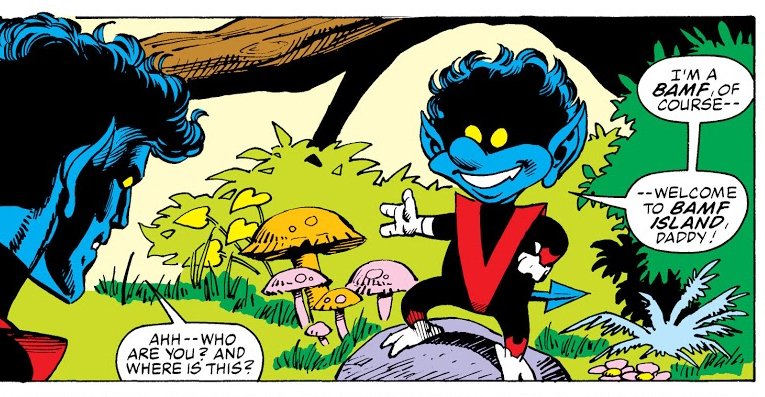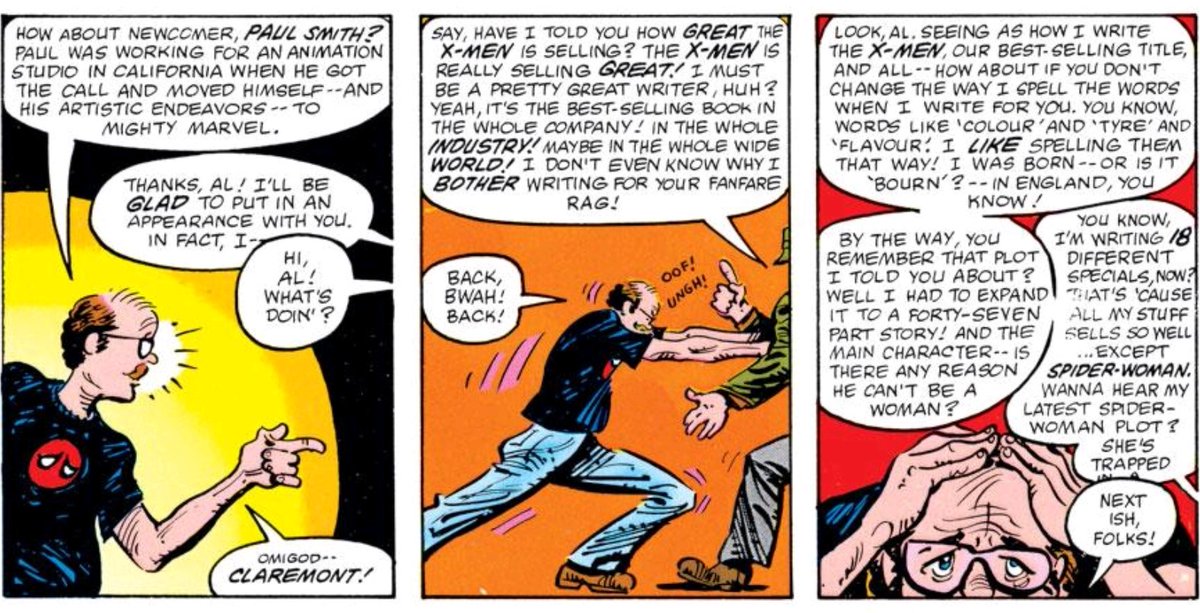
Today was Dave Cockrum’s birthday, and it’s Nightcrawler’s unofficial one in his honor. Cockrum's powerful affinity for the character he created is exemplified by the '85 Nightcrawler limited series, which Cockrum both wrote and drew. 1/9 #Xmen #Nightcrawler 

Besides being relentlessly zany (remember the six shooter-wielding sentient gator-dino "Cretacious Sam"?), the ’85 Nightcrawler series reflects Kurt's “Creator Favorite” status, inventing a space particularly suited to showcasing what makes him unique and loveable. 2/9 

In issue #1, Kitty accidentally opens a dimensional portal that sends Kurt (and Lockheed) to various fantasylands, with callbacks to “Kitty’s Fairy Tale” (including the return of the Bamfs). The original Fairy Tale reckoned with Jean's death. But this story is all about Kurt. 3/9 

In this story, Kurt is a POV character within adventures constructed around his character. Unsurprisingly, then, this series highlights many things that have since become common and important features of Kurt’s personality and rhetorical function, including… 4/9 

Kurt’s love of pirates: This spotlights his theatricality and fantasies of being an Errol Flynn-esque leading man, but also his rapport with outsiders. As he says in the later Excalibur #16, in conflicts between "order" and “outlaws,” “My own nature sides toward the pirate.” 5/9 

Kurt’s emotional intelligence: This is reflected in his recruitment of allies and fourth-wall-bending self-deprecation. Kurt is a part of but apart from this zany world, often stepping back to editorialize on the proceedings and even reflect on his own strangeness. 6/9 

Kurt’s complex sexuality: His masculine triumph (a date with the princess) is undercut when he’s suddenly stripped naked by Kitty mistakenly teleporting his costume. Yet the princess welcomes this (off-panel) nudity, suggesting Kurt's unusual body isn’t a bug, it’s a feature. 7/9 

These 4 comics published 35 years ago have had a significant afterlife, influencing Excalibur and Nightcrawler’s resurrection, and perhaps even the X of Swords event, which similarly has the X-Men fighting a sentient gator in a pocket universe with lots of sexy swashbuckling. 8/9 

The ‘85 Nightcrawler series may also complicate the project at hand, by showing the vital influence of other creators during Claremont's tenure on Uncanny X-Men. Even if Claremont's influence is dominant, serialized comics are always collaborative, individually and over time. 9/9 

Today's post was written by (e)visiting scholar, Dr. Anna Peppard (@peppard_anna), whose book on sexuality in superhero comics can be pre-ordered by individuals or their favorite library's here: utpress.utexas.edu/books/peppard-…
• • •
Missing some Tweet in this thread? You can try to
force a refresh





















